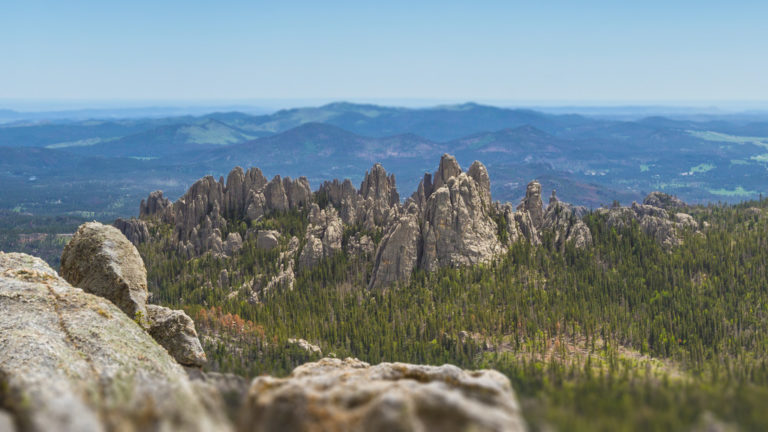Crazy Horse, Deadwood, Wild Bill Hickok, George Hearst, Red Cloud, George Armstrong Custer, Homestake, Poker Alice, Gutzon Borglum, Peter Norbeck, Rushmore, Korczak Ziolkowski, even Cary Grant and Kevin Costner – the faces and places stir the imagination. But the character of the territory referred to as the Black Hills consists of much more than just celebrities, Mt. Rushmore, and Deadwood.
The Black Hills are considered sacred by American Indian tribes. The Lakota Sioux considers the Black Hills ( HE SAPA or PAHA SAPA in the Lakota language) the center of their universe, where their culture began, and ultimately returned to in the mid-1700s. The Hills were at the center of the Great Sioux Reservation, and considered home by the seven Lakota Sioux tribes.
Westward expansion via overland trails and railroads encroached on the reservation, and a member of Colonel George Custer’s exploration party discovered gold near the current site of Custer in July, 1874. The Black Hills Gold Rush began in earnest in 1875, and the Black Hills became a part of Dakota Territory in 1877. The boom in settlement by thousands of would-be miners, cattle ranchers, railroaders, and business men and women of the western part of Dakota Territory reached its peak in the 1890s. The Black Hills rapidly became a virtual “Island in the Plains” for commerce and recreation.
An incredible variety of sights, sounds, tastes, and experiences awaits you within this roughly 100 square mile area. The Black Hills range rises from the prairies in a color that is definitely not black. The pine-covered slopes of the Hills often produce a dark blue coloration caused by atmospheric phenomena – a striking contrast to the lighter colors of the prairie grasses of the foothills.
The visual diversity of the Black Hills was, and still is, amazing—from east to west, and north to south. Surrounded by expanses of prairie in all directions, the pine-covered slopes of the Black Hills camouflage many natural treasures. Exposed granite and limestone outcroppings provide dramatic glimpses of the core of the Hills in many areas. Trees, vegetation, and wildlife of all types are at home in locales ranging from alpine-like valleys to semi-arid rangelands. Clear lakes, streams, and warm springs provide not only vital sources of water, but also afford year-round recreational opportunities.
For centuries, people have been fascinated with the Black Hills. This new century will be no different. Numerous peoples visiting or living in the Black Hills have contributed to the colorful culture and history that lives on today in the diverse attractions of the region. It matters not from which direction you arrive at the Black Hills—this unique region, its people, scenery and attractions are a land for all seasons!

